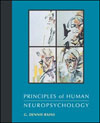In neuroscience, the most compelling examples of both progress toward reductionism (reducing complex phenomena to simpler, more basic terms) and the fruitful effects of the coevolution of different levels of analysis are seen in attempts to understand vision and the brain. We know more about vision than any other major brain process, and this knowledge is based on a confluence of data derived from a diverse range of methodological approaches, generated by many different levels of analysis. Thus, current understanding of the visual system serves as a model of a relatively advanced understanding of one domain of brain function and what that understanding tells us about the way the brain processes information. It also serves as an example of the power of a multidisciplinary and multilevel approach in achieving that understanding. Perhaps even more important, our current understanding of the visual system serves as a model for what the eventual reduction of perceptual processes to neural events may look like. As such, it is a kind of looking glass through which we can glimpse the level of understanding that will someday be available in other domains of cognition. At the same time, of course, it is also a harbinger of the new problems and questions that will be encountered as our understanding advances. It is in this spirit that we examine current knowledge of the visual system. |



 2002 McGraw-Hill Higher Education
2002 McGraw-Hill Higher Education